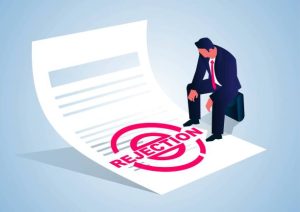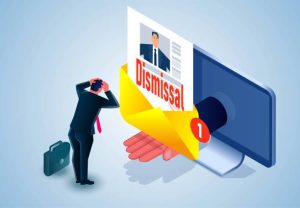
Understanding what Unfair Dismissal is: A Guide for Employees
Unfair dismissal is a term that can strike fear into the heart of any employee. Losing your job can be a distressing experience, and if it happens without good reason, it can feel deeply unjust. However, what exactly constitutes unfair dismissal, and how can you tell if you have been unfairly dismissed? This article Dismissed do I have a case will explore the topic from the perspective of employees. Discussing the definition of the term and examining the different circumstances that can lead to a successful claim.
Definition of Unfair Dismissal
To begin, it is essential to have a solid understanding of what is meant by the term “unfair dismissal”. This situation arises in the eyes of the law when an employer terminates the employment contract of an employee for no good reason. Or when the employer fails to comply with the proper procedures. The aspects of procedural fairness as set out in S387 of the Fair Work Act 2009). The reasons for dismissal that are considered fair under the law include redundancy, conduct, capability, performance. Or some other substantial reason. If the employer fails to follow a fair procedure, then this could also lead to a claim under the Fair work Act.
Examples of what does and does not constitute unfair dismissal
It’s important to note that not every instance of termination that seems unfair will necessarily be considered so under the law. For example, if an employee is dismissed for poor performance. However the employer has provided clear guidance, support, and training to help the employee improve, then this would likely be considered a fair dismissal. On the other hand, if an employee is sacked because of their gender, race, age, disability, sexual orientation, religion or belief, or pregnancy and maternity, this would almost certainly be considered unfair or unlawful dismissal.

Protected Characteristics
Protected characteristics are recognized by the law as being safeguarded from discrimination. It is possible that the dismissal of an employee by their employer for any of the reasons listed above might fall under the category of unlawful termination. Age, handicap, gender reassignment, marriage and civil partnership, pregnancy and motherhood. Also race, religion or belief, sex, and sexual orientation are some of the protected qualities. Other protected features include age, race, religion or belief, sex, and sexual orientation. Employees must be cognizant of these characteristics and understand their relevance bringing a claim. This is usually a general protections claim. (get advice on which claim to bring). Be aware of the strict 21 days to do so.
Employers must have knowledge of these protected characteristics and guarantee that they are not engaging in discriminatory practices towards employees on such grounds. Employers should have policies and procedures in place to prevent discrimination. They should provide training to their staff to promote awareness and understanding of these issues.
Protected characteristics
Employers need to be aware of the protected characteristics mentioned in anti-discrimination laws. They need take steps to prevent discrimination against employees based on these grounds. If an employee feels that they were terminated unfairly because of discrimination, they have the option to file a claim with the Fair work Commission or a state body..
It is important to note that when it comes to cases of discrimination, employers bear the responsibility of demonstrating that the dismissal was not discriminatory. Therefore, employers must be able to provide evidence to support their decision to dismiss an employee to avoid an unfair dismissal claim.

Breach of Contract
Claims may also stem from a violation of the employment contract. An example is when an employer fails to provide the required notice period. Or disregards the procedures outlined in the contract or company handbook while terminating the employee’s contract. If an employee can demonstrate that their employer has breached their contract in this way, then they may have grounds for a successful claim.
Unfair dismissal claims can also stem from a breach of contract. An employee may have a valid claim for unfair dismissal if their employment contract is terminated in violation of its terms. This can occur if the employer fails to adhere to proper procedures. They haven’t provided the required notice period, or terminates the contract for reasons that are not permitted under the agreement.
In case of a contract breach resulting in dismissal, an employee may file a claim for breach of contract along with their unfair dismissal claim. It’s important to keep in mind that the time limit to bring a breach of contract claim is six years from the date of the breach. While an unfair dismissal claim must be lodged within 21 days of the dismissal.

Examples of breach of contract
Examples of breach of contract include an employer failing to pay the agreed salary. Not providing the benefits specified in the contract, or not providing the required notice period. An employee may be able to pursue a claim for unfair dismissal if their employer has breached their contract by failing to provide the required notice period. Terminating the contract without following the correct procedures, or dismissing the employee for a reason that is not permitted under the terms of the contract.
It is important to remember that a violation of contract may in some circumstances be considered a fundamental breach, which gives the employee the right to resign from their position and file a claim for constructive dismissal. This happens when the behaviour of the employer is so severe that it breaches the implied provision of mutual trust and confidence between the employer and the employee. As a result, the employee is given permission to treat the contract has ended, and the employer is required to pay the employee for their services.
To sum up, if an employer breaches the employment contract, it can provide valid grounds for an unfair dismissal claim. If an employee believes that their dismissal was in breach of their contract, it’s advisable to consult a legal professional to understand their options.

Constructive Dismissal
Another type of unfair dismissal is known as constructive dismissal, (being forced to resign) which takes place when an employee is made to feel like they have no choice but to leave from their position owing to the actions of their employer. The employee has the burden of proving that the actions of the employer forced them into a position where they had no choice but to resign before they may file a claim for constructive dismissal. For example, if an employee’s workload is increased without any consultation or warning, and this leads to stress and illness, then the employee may have grounds for a constructive dismissal claim.
Constructive dismissal occurs when an employee feels compelled to resign from their job due to their employer’s actions. It is sometimes referred to as a ‘forced resignation’. In the eyes of the law, constructive dismissal is viewed as a type of unfair dismissal.
To be considered constructive dismissal, there are two key elements that must be present:
- The employer must have committed a serious breach of contract
- The breach must be so serious that it entitles the employee to resign in response.

Examples of situations that could lead to constructive dismissal include:
- A significant reduction in salary or benefits
- Repeatedly giving an employee unreasonable workloads or tasks that are beyond their capabilities
- Refusing to address serious health and safety concerns raised by an employee
- Bullying or harassment from a manager or colleague that is not dealt with appropriately
- Making unreasonable adjustments to an employee’s job responsibilities or working hours without first obtaining their consent.
In each of these scenarios, the actions of the employer are regarded as a major breach of the employment contract, and they have the potential to lead to a claim of constructive dismissal if the employee feels as though they have no other option than to leave as a direct result of the situation.
It is important to note that an employee must resign in response to the breach of contract relatively quickly. If they continue to work for an extended period of time after the breach, it may be viewed as acceptance of the new terms of employment and could weaken their case for constructive dismissal. Overall, constructive dismissal can be a complex area of law, and it is important for employees to seek advice from a legal professional if they believe they have been constructively dismissed.

Procedural Unfairness
To ensure fairness, employers must follow the proper procedures when dismissing an employee, regardless of whether they have a justifiable reason for the termination. This includes providing clear and concise reasons for the dismissal, allowing the employee to respond to these reasons, and offering the employee the right to appeal the decision. If an employer fails to follow these procedures, then this could be considered procedural unfairness and may lead to a successful unfair dismissal claim.
Procedural unfairness refers to situations where an employer has failed to follow the correct procedures when dismissing an employee. This can include failing to follow the correct disciplinary or grievance procedures, failing to provide sufficient notice, or failing to provide a fair and impartial hearing. Procedural unfairness can lead to a successful unfair dismissal claim if it can be demonstrated that the employer did not follow the correct procedures and that this led to the dismissal being unfair.
Warnings and opportunities to improve
For example, an employee who is dismissed for poor performance may have a successful unfair dismissal claim if the employer did not provide any warnings or opportunities to improve before dismissing them. An employee who was fired for misconduct may have a valid claim of unfair dismissal if the employer failed to follow the required disciplinary procedures. Including giving a fair and unbiased hearing. This could be the case if the company failed to follow the appropriate disciplinary procedures.
Employers must adhere to proper procedures when dismissing employees to mitigate the potential of an unfair dismissal claim. This includes providing clear reasons for the dismissal, providing an opportunity for the employee to respond, and following the correct procedures for appeal if necessary. By following the correct procedures, employers can reduce the risk of an unfair dismissal claim and ensure that their actions are seen to be fair and reasonable.

Claims can take many different forms
In conclusion, dismissals can take many different forms, from discrimination to breach of contract to procedural unfairness. As an employee, it’s important to understand your rights and to be aware of the circumstances in which you may have grounds for a successful action. By doing so, you can ensure that you are protected and that you receive fair treatment from your employer.
In final verdict, terminations is a serious issue for employees and can have significant consequences for their livelihoods and well-being. It can occur due to a range of factors, including discrimination, breach of contract, constructive dismissal, and procedural unfairness. Understanding the legal definition of unfair dismissal is important. Also the protected characteristics under discrimination law, and situations where dismissal could be considered unfair is crucial for employees. Additionally, knowing how to identify examples of breach of contract, constructive dismissal. What also matters is procedural unfairness can help employees make successful claims.

Recommendations:
If you are an employee who has been terminated for whatever reason, it is important to seek professional workplace advice. An organization that will support you to ensure that your rights are protected. In addition, it may be helpful to keep a detailed record of any incidents or actions that could be considered unfair. Including discriminatory comments or actions, breaches of contract, or instances of procedural unfairness. This can be useful evidence if you decide to make a claim.
Recommendations for employees to protect themselves from unfair dismissal:
- Always familiarize yourself with your company’s policies and procedures related to disciplinary action and dismissal.
- Keep detailed records of any incidents or conversations that could be relevant to a future dismissal case. Including dates, times, and people involved.
- If you feel that you are being unfairly treated or singled out at work, speak / complain to your manager or HR department. Try to resolve the issue early on. This is referred to as the excising of a workplace right, you cannot be terminated for doing this.
- If you are facing disciplinary action and possible dismissal, ensure that your employer follows the correct procedures. That they provides adequate notice and explanation for the decision.
- If you suspect that you have been unfairly treated and sacked and have supporting evidence, it is advisable to seek advice.
- Remember that claims have strict time limits. (21 days). So act quickly if you want to challenge your employer’s decision.
This article raises important points to consider.
I want to empower you to seek justice and compensation
If you have any questions queries, give us at A Whole New Approach a call, its free. 1800 333 666. We are well respected in the workplace relations community, we are leaders in commentary, research and representation. All Fair work Commission matters we are happy to represent you. We are proud of our staff and the outcomes they achieve for our clients.






